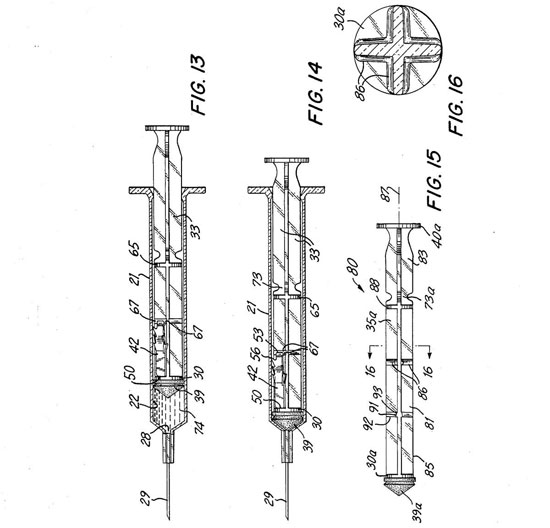Everyone should use smart syringes by 2020
The World Health Organization (WHO) expects that by 2020, all hospitals and health facilities will only use "smart needles and syringes" , which are designed to be used only once, and cannot be used for the second time.
Smart syringes reduce the spread of deadly diseases caused by needles and syringes. According to a recent study funded by WHO, in 2010, reusable needles and syringes caused 1.7 million new cases of hepatitis B, tens of thousands of new HIV infections and hundreds of thousands of people infected with hepatitis. C. That's why the World Health Organization thinks smart needles and syringes are worth investing in, even though they cost twice as much as conventional ones.
So how does smart syringes work? A quick understanding of this type of syringe has shown that it involves dozens of copyrights, originating in the 1980s onwards.
Many smart needle design prevents users from pulling up the syringe anymore if it has been pushed down. The following is an illustration of a smart syringe design, containing many small internal barbs that prevent users from pulling the syringe back after the first use.

This is just a copyright of many of the copyright related to smart syringes designed by locking mechanism, if the user deliberately pulls the syringe back after use, the syringe may break.
However, these types of syringes also have some defects. If you push the syringe too early, you will need to replace a new needle. Users also cannot easily adjust the dose, as well as mix the drugs inside the syringe. To handle the problem, the newer smart syringe allows users to move the piston multiple times.
After 1 injection, the nurse will install the lock so that the other person cannot reuse the syringe. However, this mechanism can also lead to cases where a nurse or someone accidentally / deliberately forgot to lock the syringe to use it again. WHO said low-income health workers in developing countries sometimes want to save their syringes and reuse them to increase their income.

Therefore, smart syringes are not the only solution to prevent infections through needles. In addition, hospitals still have to use some types of reusable needles and syringes in cases such as intravenous injections.
However, disposable syringes will be very effective to prevent infectious diseases. In 1999, WHO began urging countries to use disposable syringes for all child vaccinations. Since 2000, the number of HIV infections due to needle sharing worldwide has decreased by 87%, while the number of needle-infected cases of hepatitis C has decreased by 83%, while cases of hepatitis B due to needles have decreased 91%, thanks in part to the vaccination campaign.
- Self-destruct syringes
- Automatic syringes
- How does technology and Internet turn a house into 'smart'?
- US micro-robotic systems carry syringes into the spinal cord
- Discovering a smart stick is like the 'eyes' of the visually impaired
- Revealing the smart bike DuBike, with GPS navigation
- Fever Smart - Smart thermometer
- Can smart lines connect to the internet and replace people calling for ambulance?
- Smart devices serve pets 'crowned' at CES 2018
- Video: Smart earrings monitor physical fitness
- Who wears glasses is smarter than others?
- Samsung manufactures both smart bikes
 Green tea cleans teeth better than mouthwash?
Green tea cleans teeth better than mouthwash? Death kiss: This is why you should not let anyone kiss your baby's lips
Death kiss: This is why you should not let anyone kiss your baby's lips What is salmonellosis?
What is salmonellosis? Caution should be exercised when using aloe vera through eating and drinking
Caution should be exercised when using aloe vera through eating and drinking